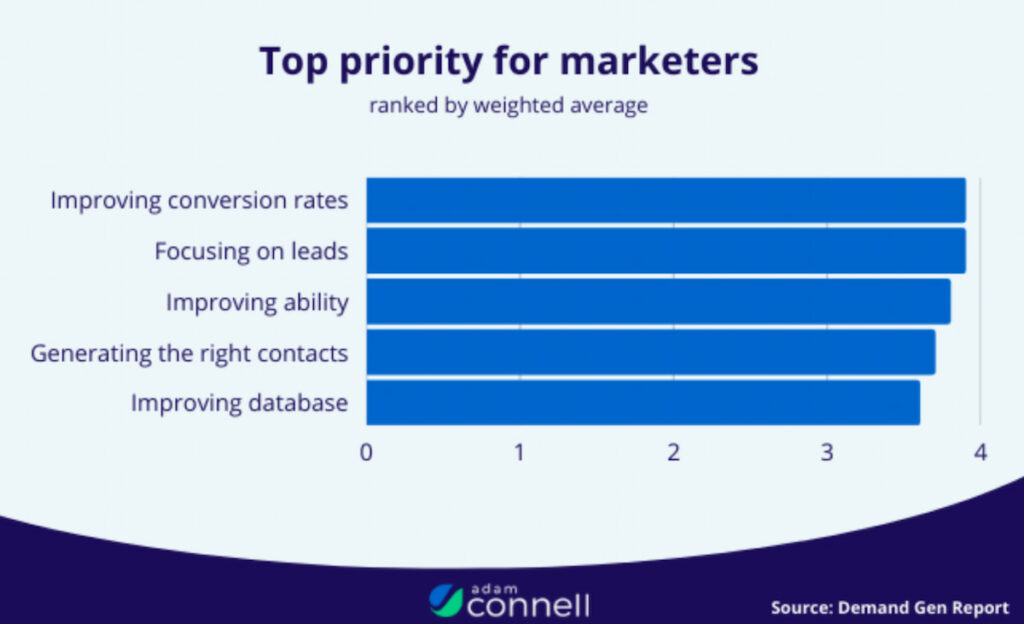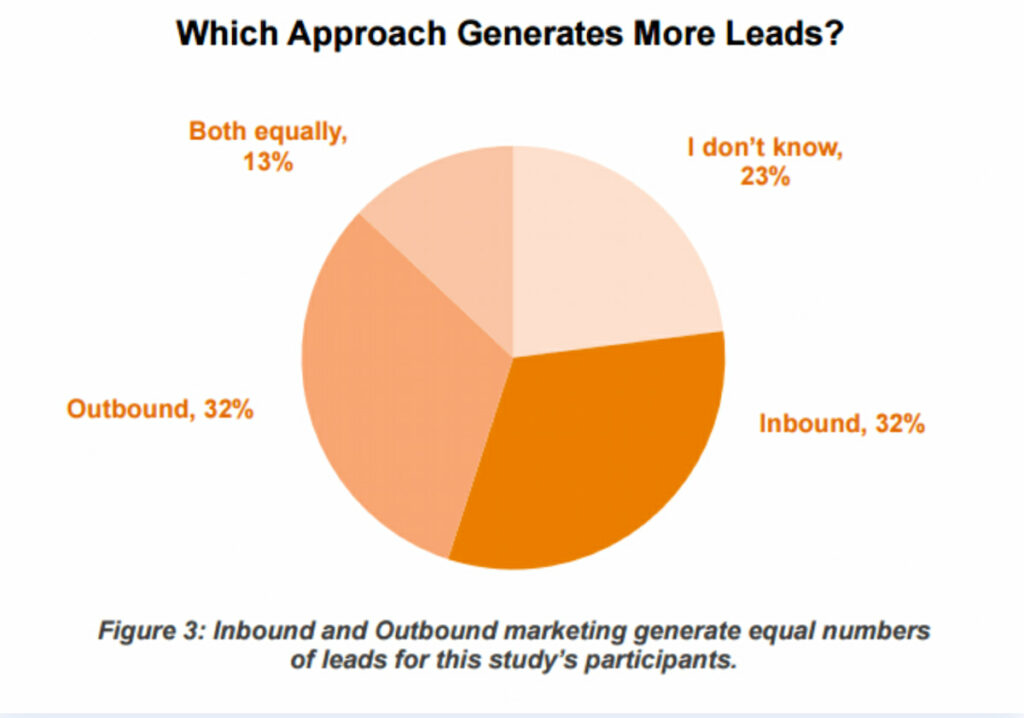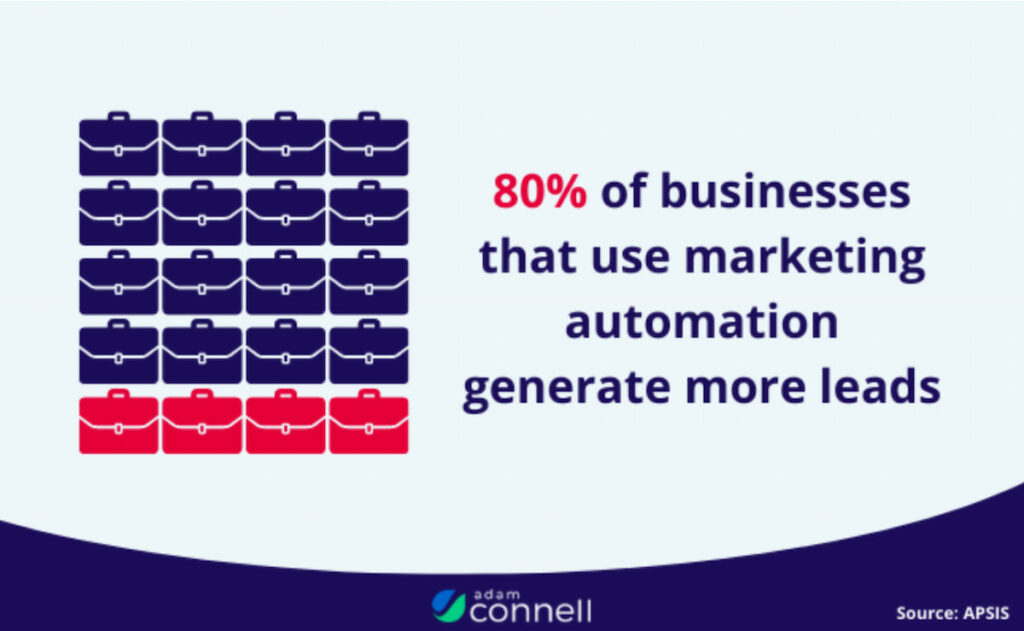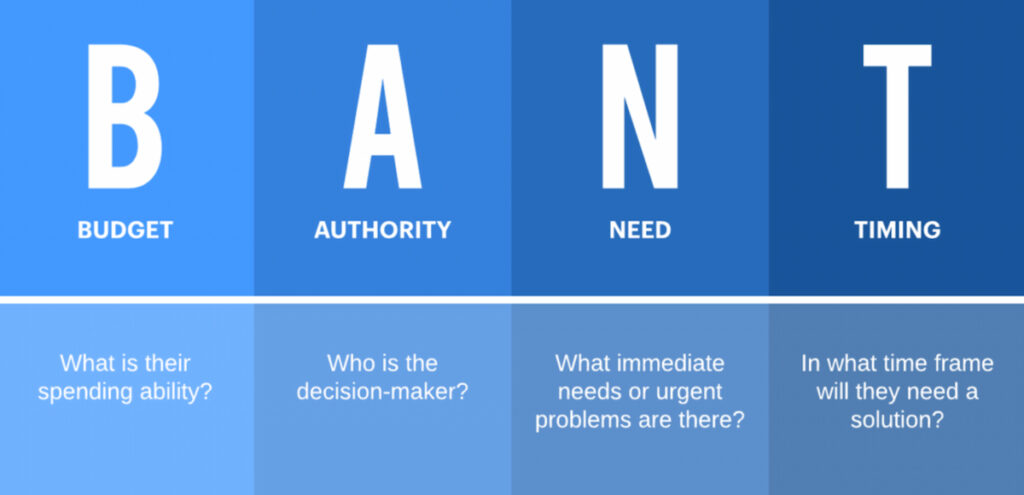So, you want to boost your sales and attract new customers? Awesome! But here’s the question: how exactly do you plan to do that? Ever feel like you’re throwing darts in the dark when trying to find new customers? Many businesses struggle to cut through the noise and reach their target audience. But it doesn’t have to be that way.
Imagine having a steady stream of potential customers knocking on your door, eager to learn more about what you offer. Sounds like a dream, right? Well, it’s time to turn that dream into reality. Welcome to our The Ultimate Guide to Outbound Lead Generation.
In this guide, we’re discovering strategies, tools, and best practices that can upgrade your outbound lead generation efforts. We’ll cover everything from identifying your ideal customer profile to crafting irresistible outreach messages that get results. Let’s get started!
Table of Contents
What Are Outbound Leads?
50% of marketers view lead generation as a key focus in their marketing efforts. When we talk about outbound leads, we mean potential customers that the company actively reaches out to. We’re not talking about those who visit the website or show interest in a product or service on their own. And it’s not just about cold calls and mass email blasts, though those can be part of the mix. Outbound leads are the result of targeted actions by your team.
Effective outbound marketing can deliver qualified prospects directly to your sales funnel. Rather than using generic bulk emails, companies increasingly partner with a cold email lead gen agency to develop customized outreach that drives higher engagement. These experts focus on reaching the ideal audience through carefully crafted messages, helping streamline the lead acquisition process. Delegating this task externally not only saves time but also ensures reliable performance across campaigns.
Key characteristics of outbound leads:
- Initiation of contact. In outbound marketing, you make the first move. You control the process and decide who to contact and when;
- Target audience. Create an Ideal Customer Profile. Who are your customers? What problems do they have? How does your product solve these problems? The more precise your profile, the better the results;
- Personalized messages. Template emails no longer work. Every message needs to be unique and relevant to the recipient.
Why do you need outbound leads? First, outbound allows you to quickly enter a new market and attract customers without waiting for them to find you. Visual marketing can also help to engage with your customer which can boost your sales.
This is especially important for startups and growing companies, whether you’re selling laptops in Nepal or any other product.
Second, you’re in control. You get to decide who you want to attract and how you’re going to do it. This means you can mix and match strategies and tools, and pivot quickly if things change.
And the coolest part, Outbound marketing lets you test different approaches on the fly and see what sticks. This helps you find what works best.
In short, this strategy is a targeted approach to attracting customers. But it requires detailed analysis, strategic planning, and constant adaptation. Basically, it’s a lot of work.
In the next section, we’ll look at the key steps to creating a killer outbound lead generation strategy.
Identify Your Target Audience
Alright, so you’re looking to generate some leads. But where do you even start? Before you start sending emails and making cold calls, you’ve got to nail down your target audience. You could poetically say it’s the key to the success of the whole campaign, but beyond that, it’s a way to save a ton of time and resources.
Understanding Your Target Audience
First and foremost, you need to understand who your potential customers are. It might sound obvious, but companies often make the mistake of trying to reach too broad an audience. This usually happens when the analysis isn’t thorough or detailed enough. Instead, focus on learning everything possible about your ideal clientele, including strategies like how to find someone’s phone number to enhance your outreach efforts.
Demographic Data
The first step is to gather demographic information. Age, gender, location, income level, education – all these details help create a clearer picture of your potential customer.
If you’re selling accounting software, your target customers are likely professionals in the finance sector or small business owners. This means they probably fall within the 30-50 age range, have higher education, and a stable income.
Modern accounting software buyers also prioritize features like cloud accessibility and real-time collaboration, which means your target audience likely includes tech-savvy professionals who value remote work capabilities and seamless integration with other business tools.
Solutions such as NetSuite accounting cater to these needs by offering scalable, cloud-based financial management with advanced automation and reporting features.
When marketing accounting software, it’s important to recognize that decision-makers often research extensively before purchasing, spending weeks comparing features, reading reviews, and seeking recommendations from peers in professional networks.
Moreover, these professionals typically spend significant time managing financial records and seek efficiency in their daily operations. Many of them have previously relied on spreadsheets or outdated accounting software, making them especially receptive to modern, cloud-based solutions that streamline their workflow.
For example, if you’re managing finances on platforms like eBay, tools such as LinkMyBooks ebay accounting software can significantly reduce manual work by automating transaction imports and reconciling sales data in real time.
The purchasing behavior of accounting software buyers reveals distinct patterns that differ significantly from consumer software purchases, as these professionals often require approval from multiple stakeholders including IT departments, compliance officers, and executive leadership before finalizing their decision.
Additionally, accounting professionals tend to be highly risk-averse when it comes to switching financial systems, preferring vendors with established track records, robust security certifications, and comprehensive customer support that can assist during critical periods like tax season or financial reporting deadlines.
In such situations, implementing advanced expense report software can streamline the financial reporting process and provide timely insights for better decision-making.
They’re often tech-savvy enough to appreciate advanced features but still value intuitive interfaces that don’t require extensive training, and they frequently connect with peers through professional networks where software recommendations carry substantial weight.
When you’re pitching to this crowd, having a detailed proposal for accounting solutions needs to go way beyond just listing features and prices. These pros want to see the real numbers – we’re talking concrete ROI calculations, specific time-saving metrics, and clear examples of how your software handles their biggest pain points like tax season bottlenecks or client reporting headaches.
Psychographic Data
Demographics are just part of the picture. It’s also important to consider psychographic data. This includes information like interests, hobbies, values, and lifestyle. This is what will help you craft truly effective messages.
Say your product is eco-friendly household goods. Your target audience isn’t just anyone; it’s people who care about the environment. They’re into healthy living and want to minimize their impact on the planet. This is the kind of information that will catch their attention in your personalized email.
Using Data for Segmentation
Once you’ve gathered all the necessary information, you can segment your audience into several groups. Working with these groups will make it easier to tailor your approach and find the right fit.
But how do you gather this data?
Start by studying your existing customers. What do they have in common? Why did they choose your product? Then, conduct surveys. You can do this on your social media channels. Facebook, Instagram, and Twitter have convenient tools for this.
Look, online surveys are great, but they’re not your only option here. Jump on the phone or get people together in a room – you’d be amazed at the gold mine of insights you can dig up when you’re actually talking with folks. And hey, throwing in a small thank-you gift like a gift card or a nice discount can really get people excited to share their thoughts.
Just keep it short and sweet – nobody wants to sit through a marathon survey, right? You’ll actually get better answers from a quick 5-minute chat than trying to force people through some lengthy questionnaire that they’ll probably quit halfway through anyway.
Alternatively, a website pop-up survey or an email survey can work. But in these cases, you might need to offer a discount on the next order or another nice bonus as an incentive to complete the survey. In return, you’ll get valuable information about what customers are looking for in your product or service.
The questions could be:
- How did you hear about our product?
- What features of our product do you like the most?
- Is there anything you would like to improve?
- How likely are you to recommend our product to a friend or colleague?
And of course, use web analytics tools to understand who visits your site, what pages they view, and where they come from. This should be your main weapon because some people might answer surveys randomly or without much thought, but analytics numbers never lie.
Here are a few tools we recommend:
| Tool | Description | Pros |
| Google Analytics | A tool for tracking user behavior on your site | Detailed insights, customizable reports, real-time data |
| HubSpot | A marketing automation platform that helps segment and analyze your audience | Comprehensive marketing tools, CRM integration, user-friendly |
| Facebook Insights | A tool for analyzing your Facebook audience | In-depth Facebook metrics, engagement tracking, free to use |
| Typeform and SurveyMonkey | Platforms for creating and distributing surveys | Easy to use, various templates, detailed survey analytics |
Creating Buyer Personas
Another cool and effective way to understand your audience is by creating “personas.” These are fictional representations of your ideal customers. Why do you need them? They help visualize exactly who you’re trying to sell your product to.
Here’s how this might look hypothetically:
- Name: Anastasia;
- Age: 33 years old;
- Position: Team leader of the content team;
- Problems: Faces difficulties in mass-checking grammatical and stylistic errors in the content her team creates;
- Goals: Find a solution for automatic checking of grammatical and stylistic errors in the content created by her team;
- Values: Accuracy, reliability, time-saving.
You can create a similar persona by adapting this template to your business.
Defining your target audience is the first and perhaps the most important step in the lead generation process. The key is to constantly collect and analyze information. Your audience can change and grow. Test different segments and approaches to understand what works best. Work with the information you gather.
Build Your Prospects’ List and Qualify Your Leads
You’ve identified your target audience! Now what? Now it’s time to compile a list of potential clients and start engaging with them. This is where the real lead generation work begins.
Building Your List of Potential Clients
Let’s start with the obvious—LinkedIn. It’s a real goldmine for finding B2B clients.
Use Professional Networks
LinkedIn Sales Navigator is super useful for finding the right people based on industry, job title, company, and other criteria.
For example, if you’re selling project management software, you can use LinkedIn Sales Navigator to find project managers and IT directors in companies with 100 to 5000 employees in your region.
Use Specialized Databases
There are platforms that provide extensive databases with contact information for companies and decision-makers. Here are a few:
- ZoomInfo;
- DiscoverOrg;
- Apollo.
Use Web Scraping
Web scraping tools (like Scrapy or Octoparse) can help you automatically gather data from websites.
Say you want to compile a list of all startups in your region. Use Scrapy and extract data from sites like AngelList or Crunchbase.
Scraping LinkedIn data offers a powerful way to identify potential leads and gather valuable insights to enhance your outreach strategy.
You don’t have to always scrap LinkedIn data with a LinkedIn scrapper. There are reverse email search tools where you can simply search someone’s email address, and they will find all the LinkedIn profile data associated with that email.
The proliferation of people search engines has revolutionized how businesses and individuals locate contact information, with platforms streamlining the process of finding comprehensive personal and professional details across multiple databases simultaneously. Services like Find People Fast leverage aggregated public records, social media profiles, and professional networks to provide comprehensive background information that would traditionally require hours of manual research across different platforms.
The integration of AI-powered matching algorithms in these tools has significantly improved accuracy rates, allowing users to cross-reference multiple data points such as names, locations, phone numbers, and email addresses to verify identity and ensure they’re connecting with the right person.
The digital landscape has revolutionized how businesses approach data collection, turning information gathering into a strategic competitive advantage. Sophisticated data extraction methodologies now allow organizations to uncover hidden insights that were once invisible, transforming seemingly random online information into powerful, actionable intelligence.
By implementing intelligent scraping technologies and advanced filtering techniques, companies can build comprehensive databases that provide unprecedented depth and breadth of market understanding. These innovative approaches not only democratize access to valuable information but also enable businesses to make more nuanced, data-driven decisions that can fundamentally reshape their strategic approach to market research and lead generation.
With emerging lead generation trends emphasizing personalization, real-time intent data, and AI-powered targeting, businesses can now convert insights into action with far greater precision and speed.
Starting Your Outreach Campaign
Personalized messages have a much higher chance of being read and an even higher chance of getting a response. Mass emails sent to everyone are much less effective these days. Use the data you’ve gathered about each client to tailor your message specifically to them.
Personalizing Messages
Instead of a standard “Hi, we offer project management software,” write: “Hi Anastasia! I noticed that your company has been growing lately and just opened a new branch. Our project management software can help you effectively coordinate teams across different locations.”
Building a project management dashboard can further streamline your team’s productivity by consolidating tasks, timelines, and collaboration tools into one centralized hub.
Additionally, consider using a banner generator to create visually appealing elements that can grab attention and make your message stand out even more.
Multi-Step Campaigns
Don’t limit yourself to a single message. Build a multi-step campaign with several touchpoints: email, LinkedIn messages, and calls. This increases the likelihood of being noticed. To make this process more efficient, consider using LinkedIn automation tools to help you manage these touchpoints and ensure that your outreach stays personalized and consistent without manual effort.
Be persistent but not pushy. Make sure your messages are useful and relevant, not annoying.
For example:
- Day 1: Send a personalized email;
- Day 3: Add the prospect on LinkedIn and send a message;
- Day 7: Make a call;
- Day 10: Send a second email with additional information or case studies.
A small but important tip: test what times your messages get the best response. This can significantly boost your conversion rates.
Using Automation
Of course, in 2024, there’s no need to do everything manually! There are tools to automate these processes. The main ones are:
- Outreach.io;
- Sales Loft;
- FluentCRM;
- HubSpot.
These will help you manage multi-step campaigns. For instance, with these tools, you can set up a campaign that automatically sends a sequence of messages and then notifies you when a prospect responds. if you’re still unsure how these tools can help, take a look at the email automation examples FluentCRM curated.
Lead Qualification
Not everyone who responds to your messages will be a good lead. You need to assess their potential.
To start, try the BANT methodology. BANT is a proven and effective method for qualifying leads.
- Budget: Does the client have the budget for your product?
- Authority: Are they a decision-maker or influencer in the decision-making process?
- Need: Does the client need your product?
- Timing: When is the client planning to make a purchase?
Also, conduct short phone interviews or video calls to learn more about the client’s needs and capabilities. Here’s what you might want to find out:
- How are you currently addressing the problem we can help solve?
- What are your priorities for the next six months?
- What is your decision-making process?
And of course, CRM tools (like Salesforce or Pipedrive) will help you track interactions with clients. Enter all the client data into the CRM. Everything, including the results of each touchpoint. This way, you’ll see the full picture and understand where each lead stands. If you’re considering other options, exploring Pipedrive competitors might offer solutions that better fit your needs.
Creating a list of promising clients and effectively conducting outreach campaigns are key steps. While this may not bring in new leads, it significantly improves the quality of the leads you already have. To further enhance your outreach efforts, consider incorporating SEO automation tools into your strategy. These tools can help optimize your online presence and attract more qualified leads organically, which is often a part of comprehensive SaaS development strategies.
Engaging with link building communities can also provide valuable insights and opportunities to strengthen your link building efforts. By participating in these communities, you can stay updated on the latest trends and best practices in link building, further enhancing your outreach and SEO strategies.
Demo Your Product or Service and Close the Deal
So, you’ve identified your target audience, gathered a list of potential clients, ran an outreach campaign, and qualified your leads. Most of the work is done! Now comes the most important part – showcasing your product or service and closing the deal. You need a solid plan for this.
Preparing for the Demo
First off, make sure your demo is highly relevant to the specific client. Research the company, understand their pain points and needs. As always, personalize as much as possible.
For example, if you’re selling a CRM system and your client is a small retail business, focus on features that help them manage inventory better and improve customer service. Skip the fluff about other cool features. Give them exactly what they need.
“Approach each customer with the idea of helping him or her solve a problem or achieve a goal, not of selling a product or service.” – Brian Tracy
When crafting your demo script, use real examples and case studies to show the value of your product. For the CRM system, you could prepare a demo script that includes adding a new client, creating a deal, tracking interactions, and automating tasks.
Running the Demo
Start by discussing the client’s problems and pain points. This helps set the context and shows you understand their needs.
For example: “I know it’s important for you to improve inventory management and reduce order processing time. Check out how our system can help you with that.”
Show the key features of your product that address the client’s problems. Demonstrate exactly how your product can help improve their processes.
If we’re talking about the hypothetical CRM system, show how it automatically sends reminders for scheduled calls or meetings. Explain how this helps sales managers keep track of important events.
Also, ask questions. This keeps the client engaged and makes the demo more interactive. Remember, your client isn’t here for a lecture; they need to actively participate in the conversation.
For example: “Do you think this feature could help your team speed up order processing? Are there any specific tasks you’d like to see in action?”
Closing the Deal
Be ready for objections and questions. Few people will immediately say, “Yes, I’ll take it!” after your first pitch. Respond honestly and thoroughly, and provide examples and case studies. Clients want to see how your product has helped others, not just hear your praises about it.
For example: “I understand your concern about integrating with existing systems. We had a similar case with a client in your industry, and we successfully integrated our system with their ERP.”
The old, tried-and-true method still works: create a sense of urgency. Just like 10-20 years ago in marketing, offer limited-time discounts or special conditions. This can help the client make a quicker decision.
For example: “If you decide within this week, we can offer you a 10% discount for the first year.”
Once all questions are addressed and you see the client is ready to buy, it’s time to wrap things up. Discuss terms, sign the contract, and agree on the next steps. Using esignatures can streamline the contract signing process and make it more convenient for both parties.
For example: “I’m glad to hear you’re interested. Let’s discuss the contract details and start the implementation process. When would be a good time for you to meet and discuss the next step?”
In conclusion, here are a couple more tips:
- Record your demos to analyze them and find ways to improve (this is also useful for training new employees);
- After the demo, make sure to follow up with the client to get their feedback and answer any additional questions.
An effective product demo is an art. To nail it, you need to know not only your product inside out but also understand human psychology.
Conclusion
So, we’ve talked about what outbound leads are and walked through the process of generating them, from identifying your target audience to closing the deal.
As you’ve probably realized by now, outbound lead generation isn’t just a strategy; it’s an art. Success in this field depends on a lot of factors: understanding your audience, personalizing your communication, using modern tools and technology, and more.
Don’t forget the importance of data and analytics. Keep analyzing your results and look for ways to improve. If you need advice or support, consider reaching out to communities like The Awesome Marketers in Helsinki, where experienced marketers regularly share insights and strategies.
We hope this guide has been a helpful tool in mastering outbound lead generation. Use the knowledge you’ve gained to boost your marketing efforts and attract more clients.



